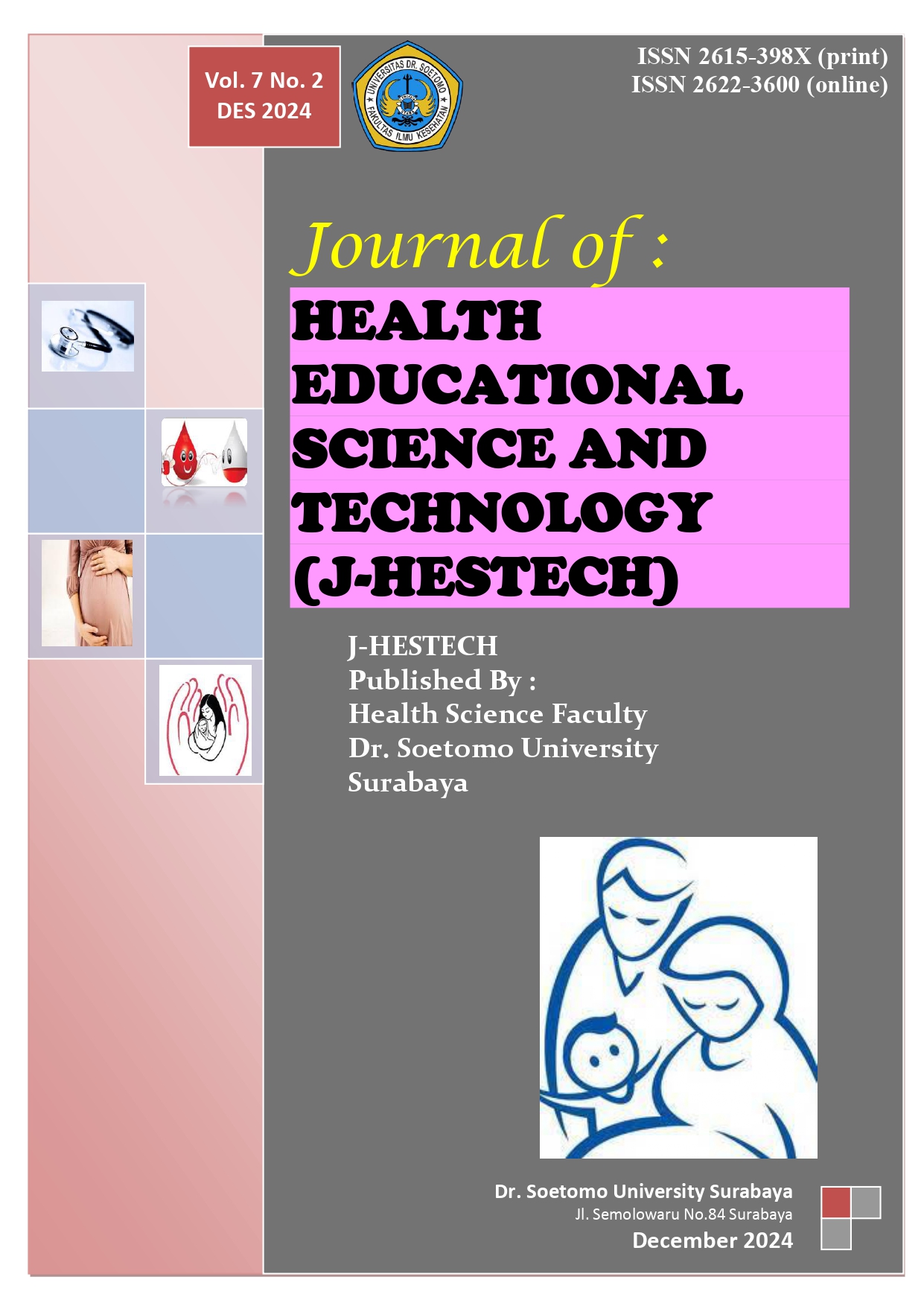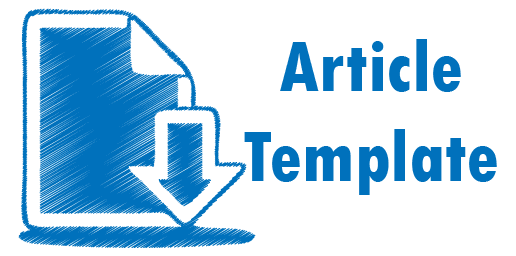Evaluasi Kebijakan UHC Dalam Dalam Pelayanan Kesehatan Ibu Dan Anak: Scoping Review
 Abstract views: 62
,
Abstract views: 62
,
 PDF downloads: 27
PDF downloads: 27
Abstract
Abstrak: Universal Health Coverage (UHC) atau Cakupan Kesehatan Semesta berkontribusi pada inklusi sosial, kesetaraan gender, pengentasan kemiskinan, pertumbuhan ekonomi, dan martabat manusia (WHO, 2021).Peningkatan akses layanan kesehatan yang mudah, kualitas pelayanan bermutu tinggi, fasilitas pelayanan terjangkau, sumber daya manusia kesehatan yang merata diseluruh wilayah perkotaan maupun pedesaan terbukti mempengaruhi cakupan pelayanan kesehatan universal sehingga bermanfaat bagi ibu dan anak.Tujuan:Scoping review ini bertujuan untukmengevaluasi kebijakan UHC dalam pelayanan kesehatan ibu dan anak.Design: A Scoping review menggunakan PRISMA-ScR Ceklist. Metode:Identifkasi fokus review menggunakan framework PCC, pencarian database dari Pubmed, Scopus, Wiley Online Library, dan Science Direct dilakukan tahun 2019-2023, dan dapat diakses secara gratis, dengan kata pencarian yang berbeda - beda di setiap database dan artikel yang dipilih dilakukan Critical Appraisal menggunakan ceklist Joanna Briggs Institute. Hasil:Berdasarkan artikel yang diseleksi menggunakan Mendeley didapatkan10 artikeldari 718 artikel berdasarkan kriteria inklusi dan eksklusi, dengandesain penelitian kualitatif dan mix methode serta satu artikel kohort retrospektif, yang membahas tentang kebijakan UHC dalam pelayanan kesehatan ibu dan anak. Simpulan:Pelayanan kesehatan ibu dan anak dapat dilakukan dengan memanfaatkan cakupan kesehatan universal dimanapun dan kapanpun tanpa kekhawatiran masalah pembiayaan, dan cakupan kesehatan universal dapat tercapai apabila akses layanan kesehatan ditingkatkan, sumber daya kesehatan merata diseluruh wilayah Indonesia.
Kata Kunci : UHC Policy, Maternal health service, Child health service,
Abstrack: Universal Health Coverage (UHC) contributes to social inclusion, gender equality, poverty alleviation, economic growth and human dignity (WHO, 2021). Increasing easy access to health services, high quality services, affordable service facilities, health human resources that are evenly distributed throughout urban and rural areas have been proven to influence universal health service coverage so that it is beneficial for mothers and children. Objective: This scoping review aims to evaluate UHC policies in maternal and child health services. Design: A Scoping review using PRISMA-ScR Checklist. Method: Database searches from Pubmed, Scopus, Wiley Online Library, and Science Direct were carried out in 2019-2023, and can be accessed for free, with the search words UHC" AND "Policy" AND "maternal" AND "child health" AND "service" OR “UHC” AND ”Policy” OR “maternal” AND “child health” OR “service” and the selected articles were carried out by Critical Appraisal using the Joanna Briggs Institute checklist. Results: There were 10 articles that had been selected from 718 articles based on inclusion and exclusion criteria, with a qualitative and mixed method research design and 1 retrospective cohort article, which evaluated UHC policies in maternal and child health services. Conclusion: it’s the universal health coverage (UHC) can be achieved if access to health services is improved, health resources are evenly distributed throughout Indonesia. Maternal and child health services can be provided by utilizing universal health coverage anywhere and at any time without worrying about financing problems.
Keywords: UHC Policy, Maternal health service, Child health service.
References
2. Aminda RS, Rahayu R, Medika RS. Mencari Titik Keseimbangan Tarif INACBGs Versus Tarif Rumah Sakit. 2014;185–95.
3. Pham MT, Rajić A, Greig JD, Sargeant JM, Papadopoulos A, Mcewen SA. A scoping review of scoping reviews: Advancing the approach and enhancing the consistency. Res Synth Methods. 2014;5(4):371–85.
4. Munn Z, Peters M, Stern C, Tufanaru C, McArthur A, Aromataris E. Systematic review or scoping review? Guidance for authors when choosing between a systematic or scoping review approach. 2018;143.
5. Arksey H, O’Malley L. Scoping studies: Towards a methodological framework. Int J Soc Res Methodol Theory Pract. 2005;8(1):19–32.
6. Peters MDJ, Godfrey CM, Khalil H, McInerney P, Parker D, Soares CB. Guidance for conducting systematic scoping reviews. Int J Evid Based Healthc. 2015;13(3):141–6.
7. Mafiana JJ, Shen X, Hu W, Wang X. Insight into Nigeria’s progress towards the universal coverage of reproductive, maternal, newborn and child health services: a secondary data analysis. BMJ Open [Internet]. 2022;12(7). Available from: https://www.scopus.com/inward/record.uri?eid=2-s2.0-85135617143&doi=10.1136%2Fbmjopen-2022-061595&partnerID=40&md5=d1917d0d52e1fa229800c23b9509b104
8. Ezenwaka U, Manzano A, Onyedinma C, Ogbozor P, Agbawodikeizu U, Etiaba E, et al. Influence of Conditional Cash Transfers on the Uptake of Maternal and Child Health Services in Nigeria: Insights From a Mixed-Methods Study. Front Public Heal [Internet]. 2021;9. Available from: https://www.scopus.com/inward/record.uri?eid=2-s2.0-85111250503&doi=10.3389%2Ffpubh.2021.670534&partnerID=40&md5=fd7cbb707fa5e882cd3528c09c6e3fc3
9. Wehrmeister FC, Barros AJD, Hosseinpoor AR, Boerma T, Victora CG. Measuring universal health coverage in reproductive, maternal, newborn and child health: An update of the composite coverage index. PLoS One [Internet]. 2020;15(4):1–10. Available from: http://dx.doi.org/10.1371/journal.pone.0232350
10. Serván-Mori E, Cerecero-García D, Heredia-Pi IB, Pineda-Antúnez C, Sosa-Rubí SG, Nigenda G. Improving the effective maternal-child health care coverage through synergies between supply and demand-side interventions: Evidence from Mexico. J Glob Health [Internet]. 2019;9(2). Available from: https://www.scopus.com/inward/record.uri?eid=2-s2.0-85078671643&doi=10.7189%2Fjogh.09.020433&partnerID=40&md5=282e8784abd13a8285ac97ad8bcd42a5
11. Van Hout MC, Fleißner S, Klankwarth U-B, Stöver H. “Children in the prison nursery”: Global progress in adopting the Convention on the Rights of the Child in alignment with United Nations minimum standards of care in prisons. Child Abuse Negl [Internet]. 2022;134:105829. Available from: https://www.sciencedirect.com/science/article/pii/S0145213422003635
12. Zaka N, Umar M, Ahmad AM, Ahmad I, Reza TE, Sarfraz M, et al. Equity trends for the UHC service coverage sub-index for reproductive, maternal, newborn and child health in Pakistan: evidence from demographic health surveys. Int J Equity Health [Internet]. 2023;22(1). Available from: https://www.scopus.com/inward/record.uri?eid=2-s2.0-85175843091&doi=10.1186%2Fs12939-023-02043-w&partnerID=40&md5=1241ca42e468ddea9ca56df61e2a718e
13. Eregata GT, Hailu A, Memirie ST, Norheim OF. Measuring progress towards universal health coverage: National and subnational analysis in Ethiopia. BMJ Glob Heal [Internet]. 2019;4(6). Available from: https://www.scopus.com/inward/record.uri?eid=2-s2.0-85074657911&doi=10.1136%2Fbmjgh-2019-001843&partnerID=40&md5=9b882d76f119959fb25ba81dbde24667
14. Muriuki A, Yahner M, Kiragu M, De Graft-Johnson J, Izulla P. On the road to universal coverage of postnatal care: considerations for a targeted postnatal care approach for at-risk mother-baby dyads in low-income and middle-income countries informed by a consultation with global experts. BMJ Open [Internet]. 2022;12(6). Available from: https://www.scopus.com/inward/record.uri?eid=2-s2.0-85132080685&doi=10.1136%2Fbmjopen-2021-058408&partnerID=40&md5=d21bbc7205c5c079098e6bbcd7ef8fde
15. Dowou RK, Amu H, Saah FI, Adeagbo O, Bain LE. Increased investment in Universal Health Coverage in Sub–Saharan Africa is crucial to attain the Sustainable Development Goal 3 targets on maternal and child health. Arch Public Heal [Internet]. 2023;81(1). Available from: https://www.scopus.com/inward/record.uri?eid=2-s2.0-85149959863&doi=10.1186%2Fs13690-023-01052-z&partnerID=40&md5=2cdc245d93ae5c71ca45b70ff9482c74














